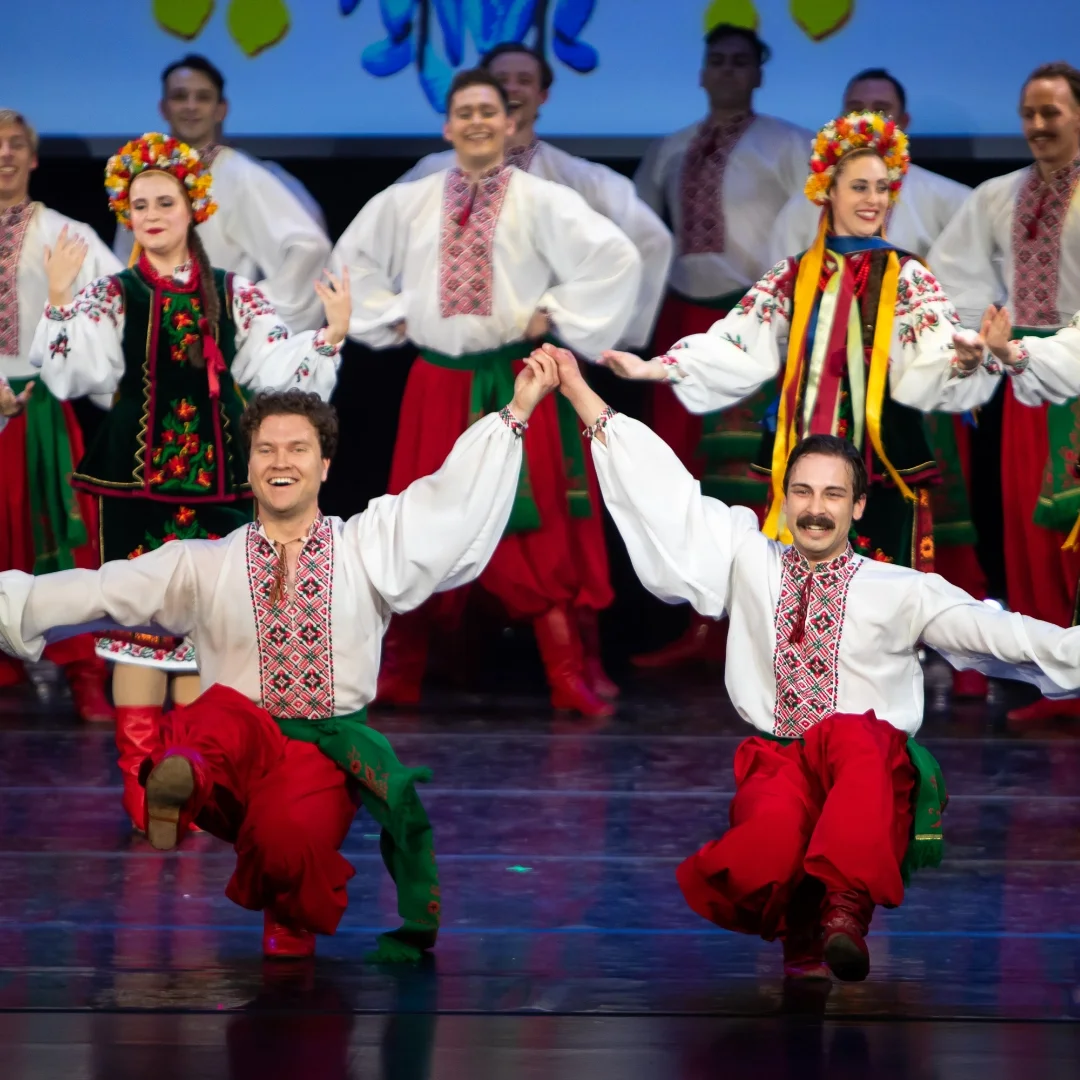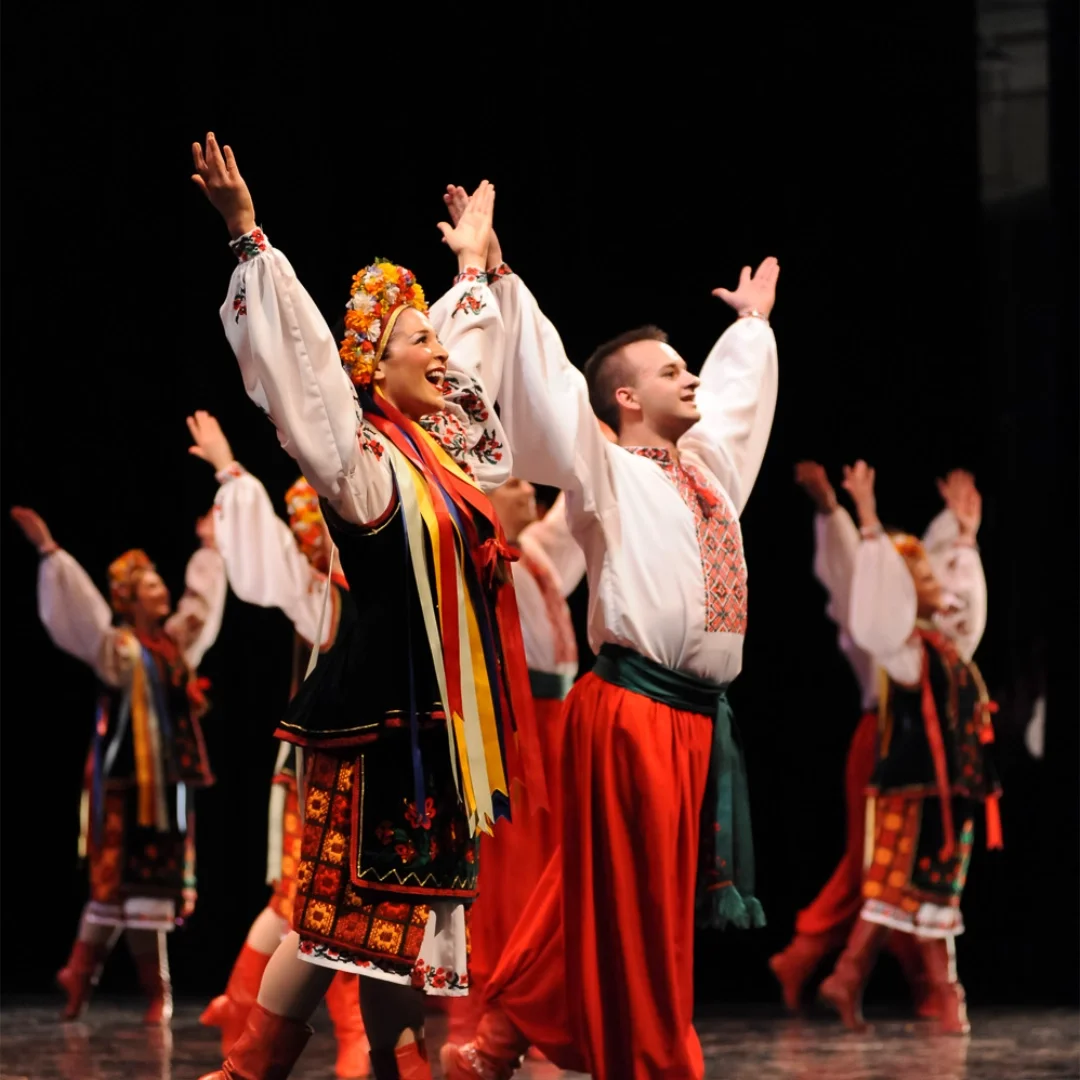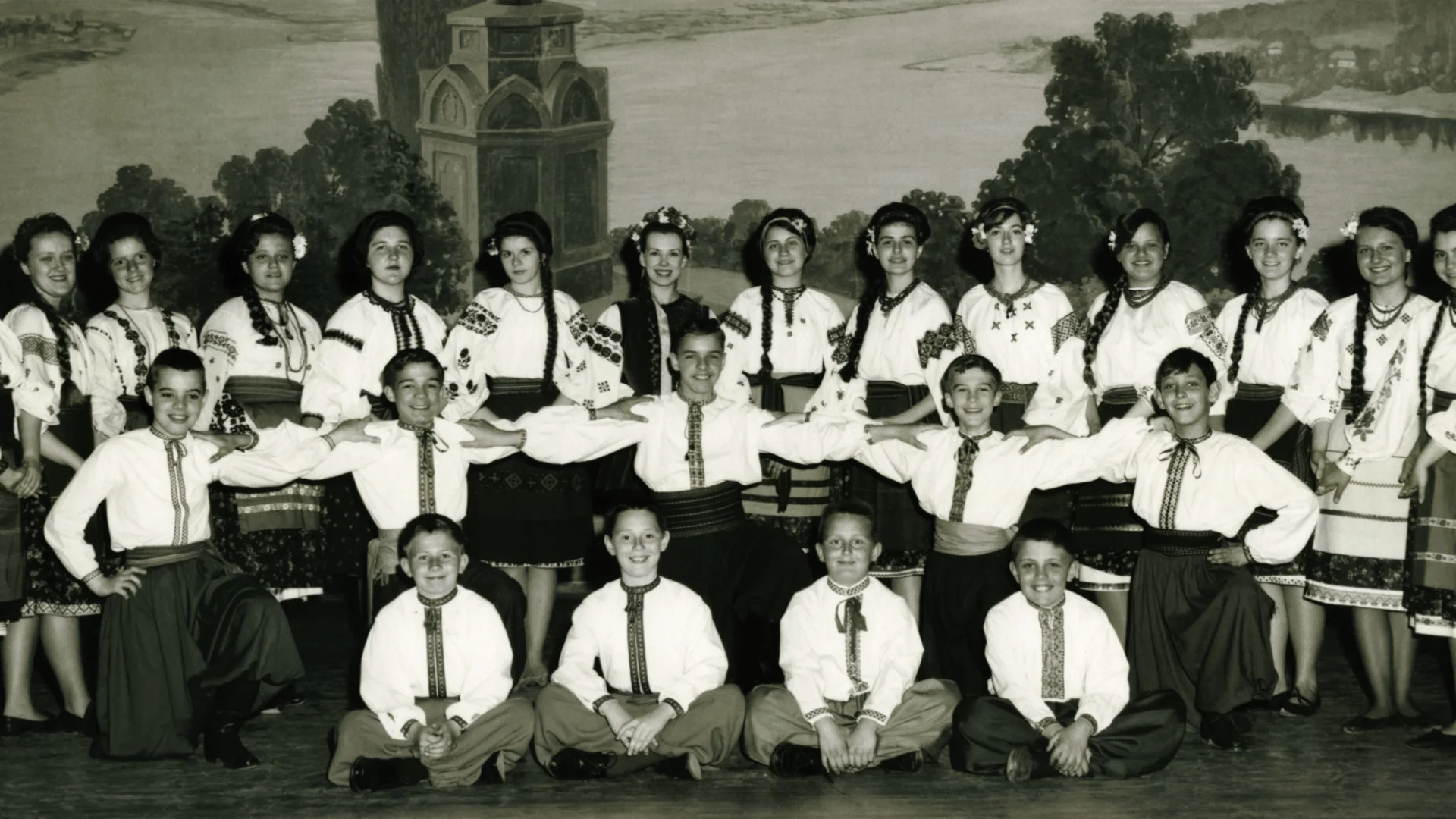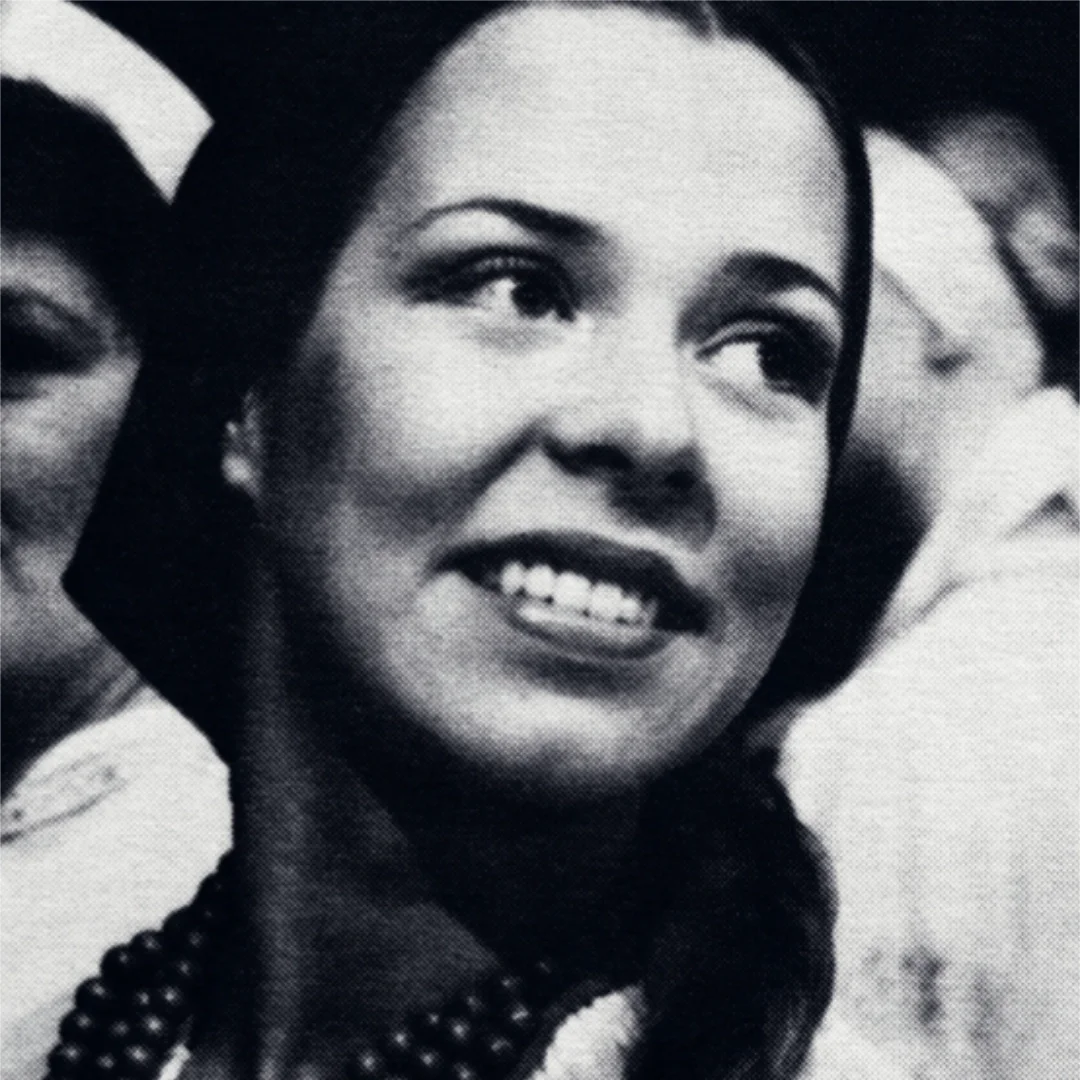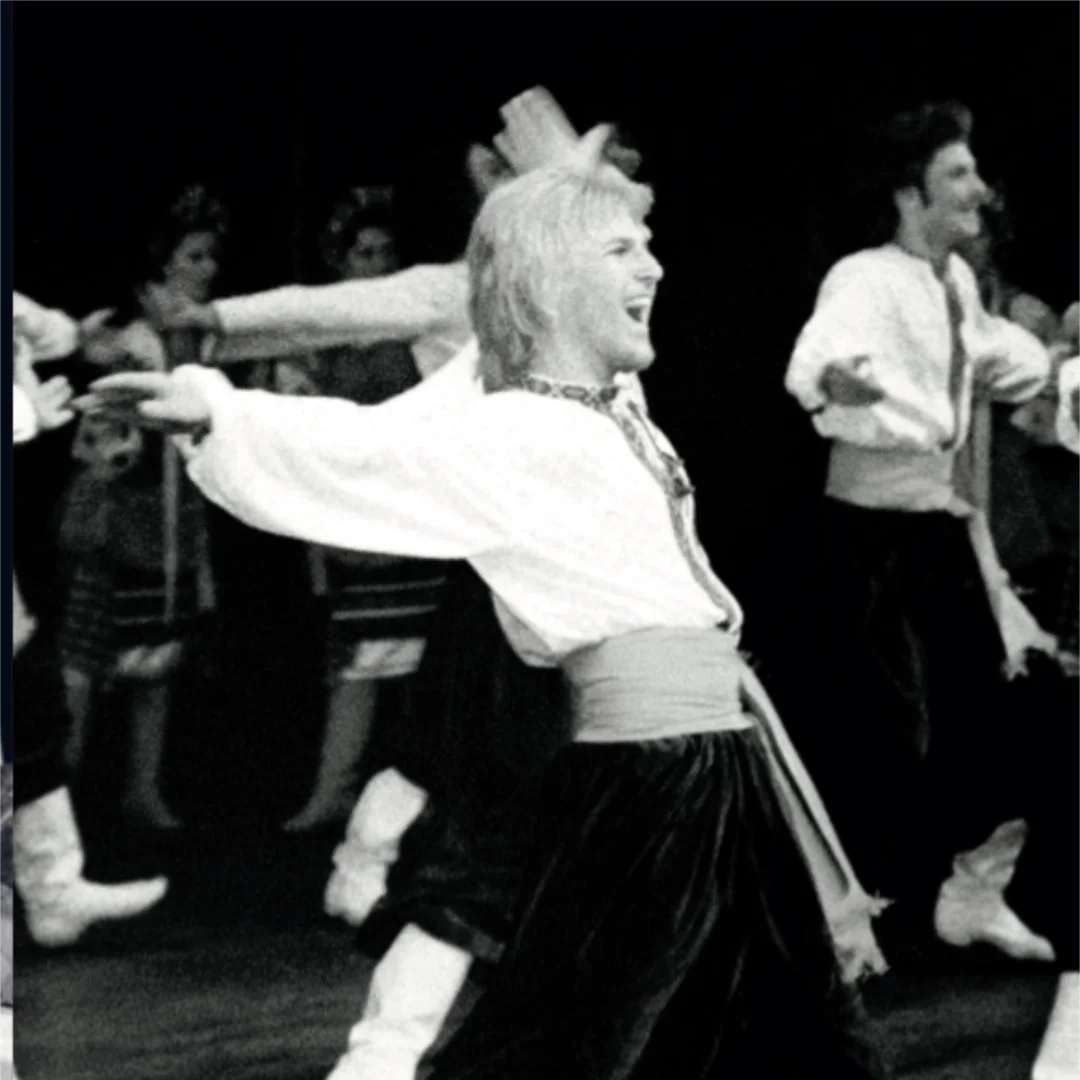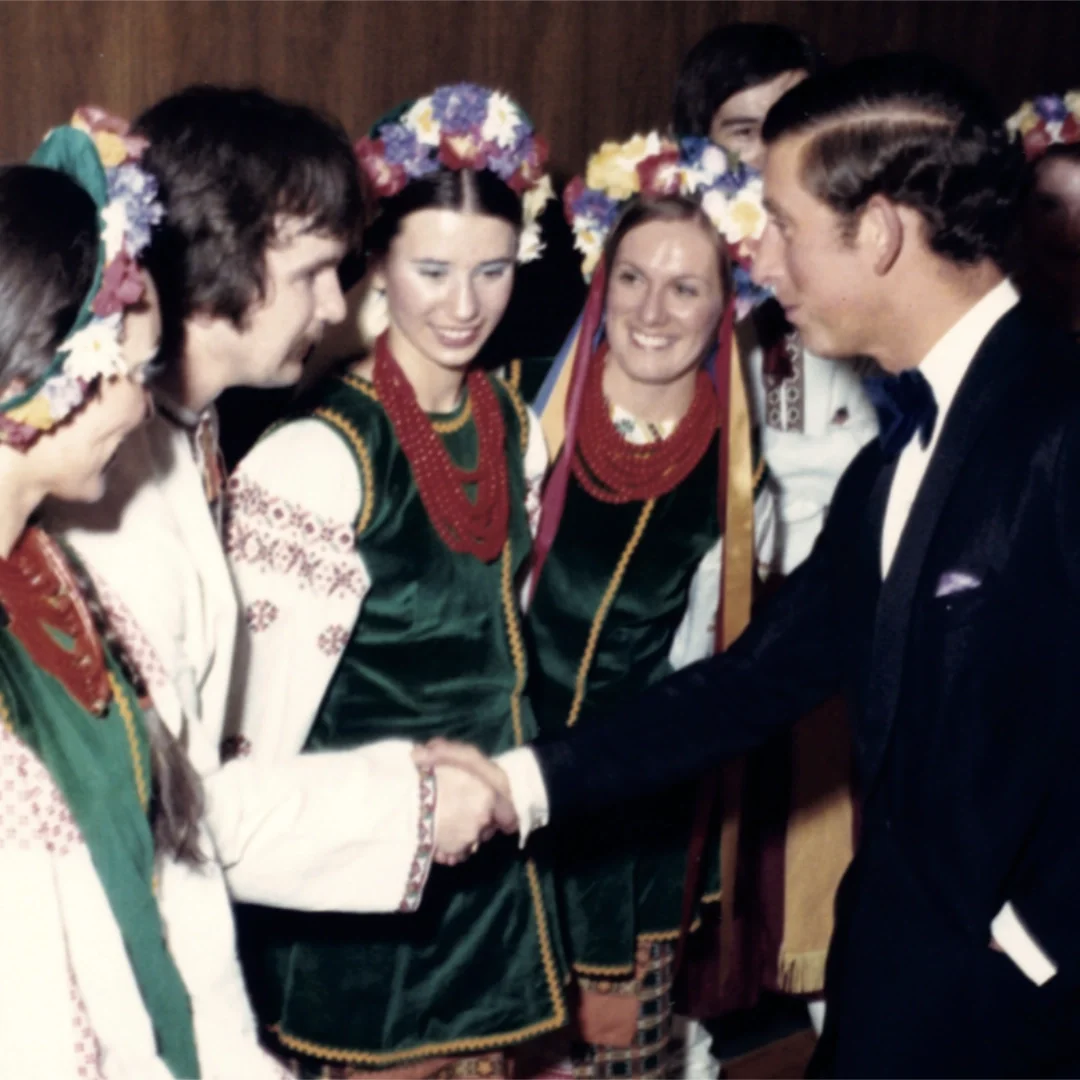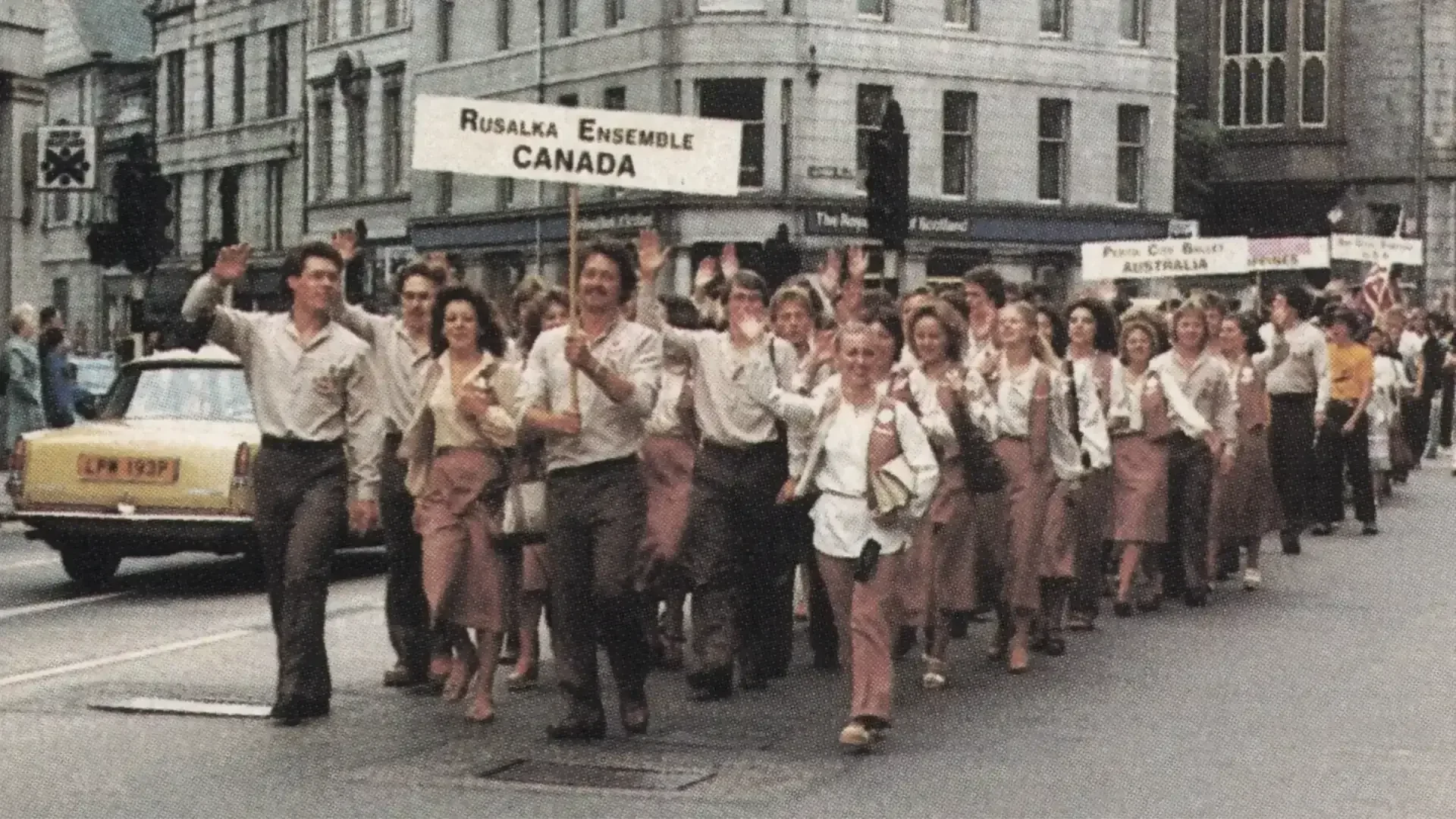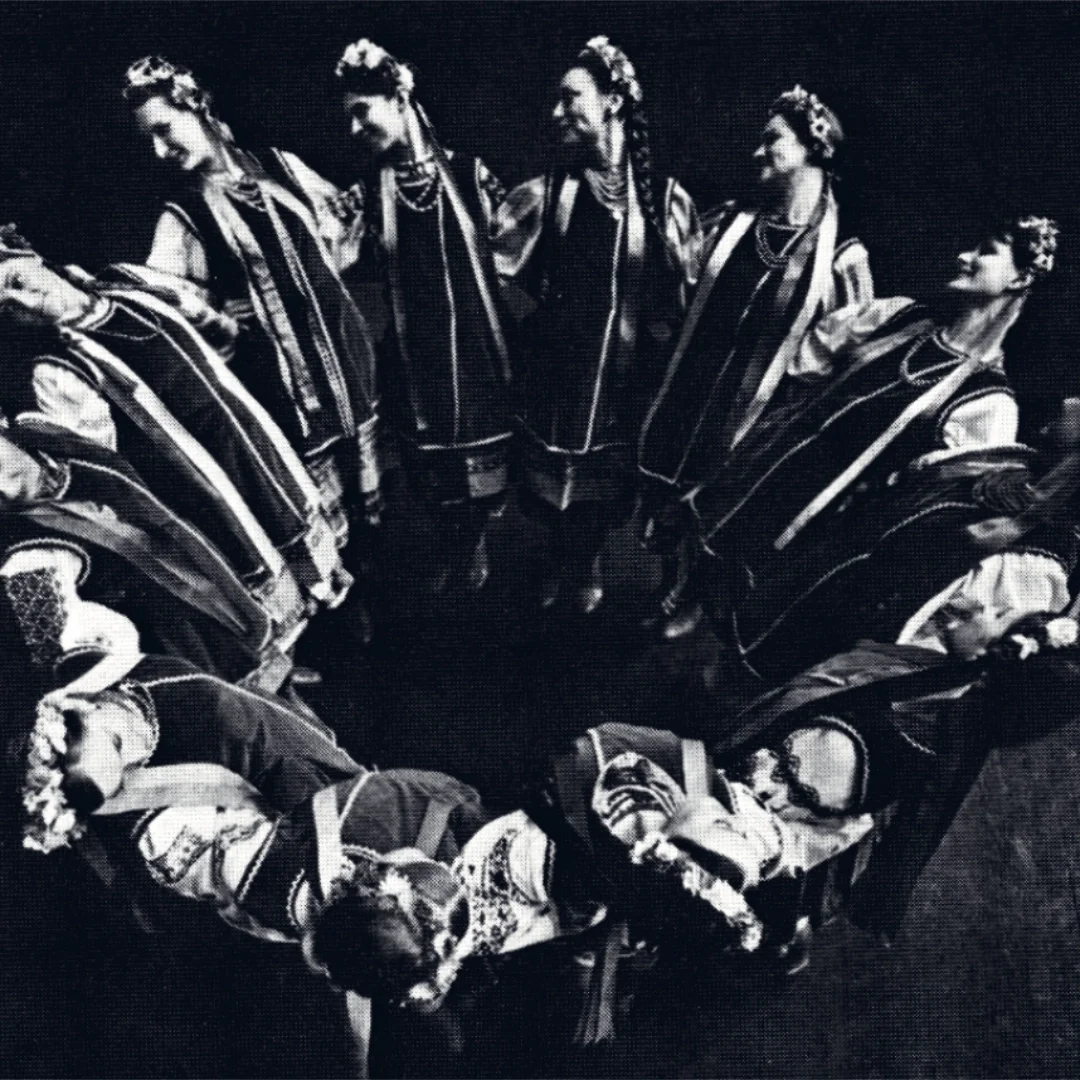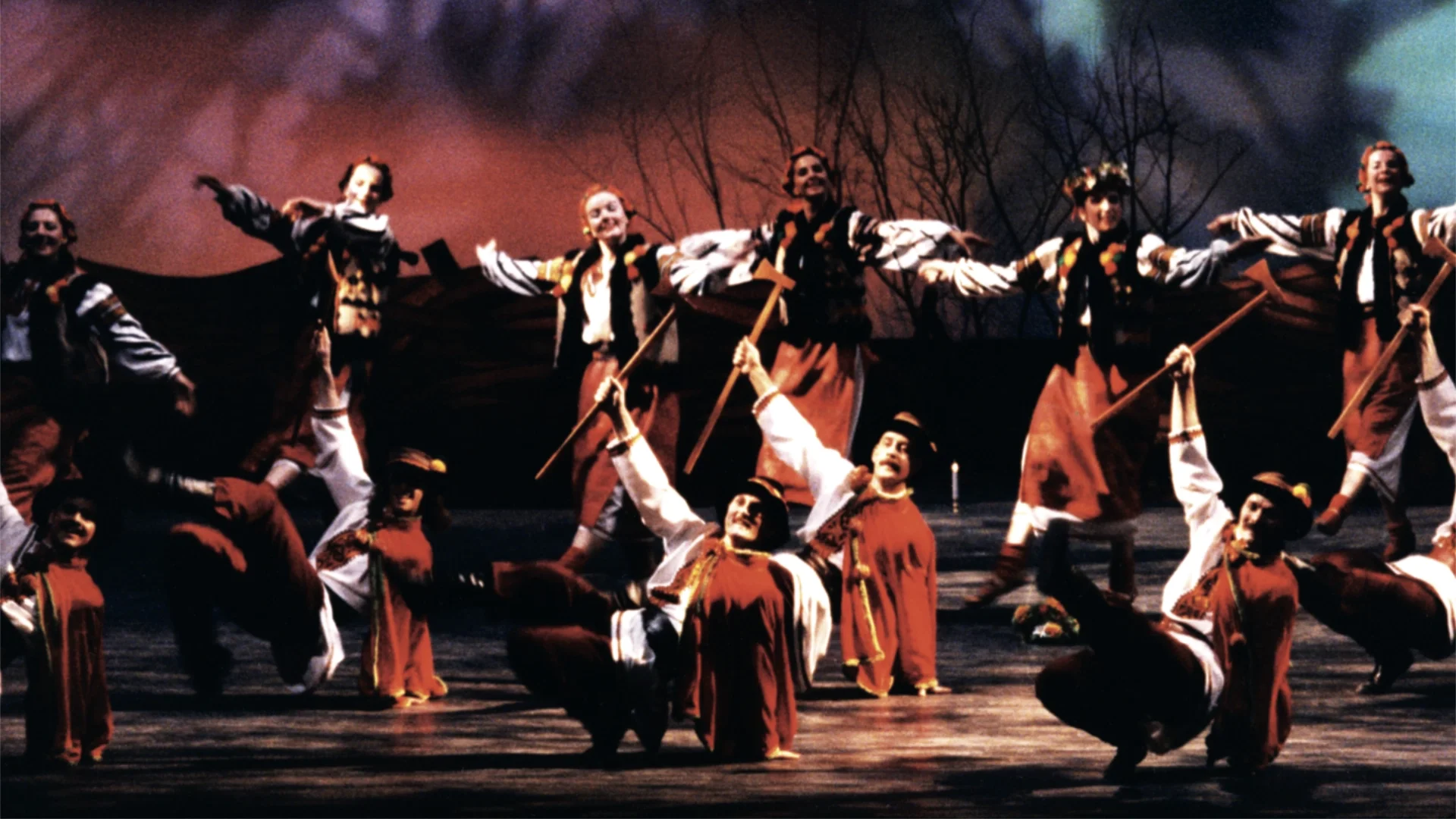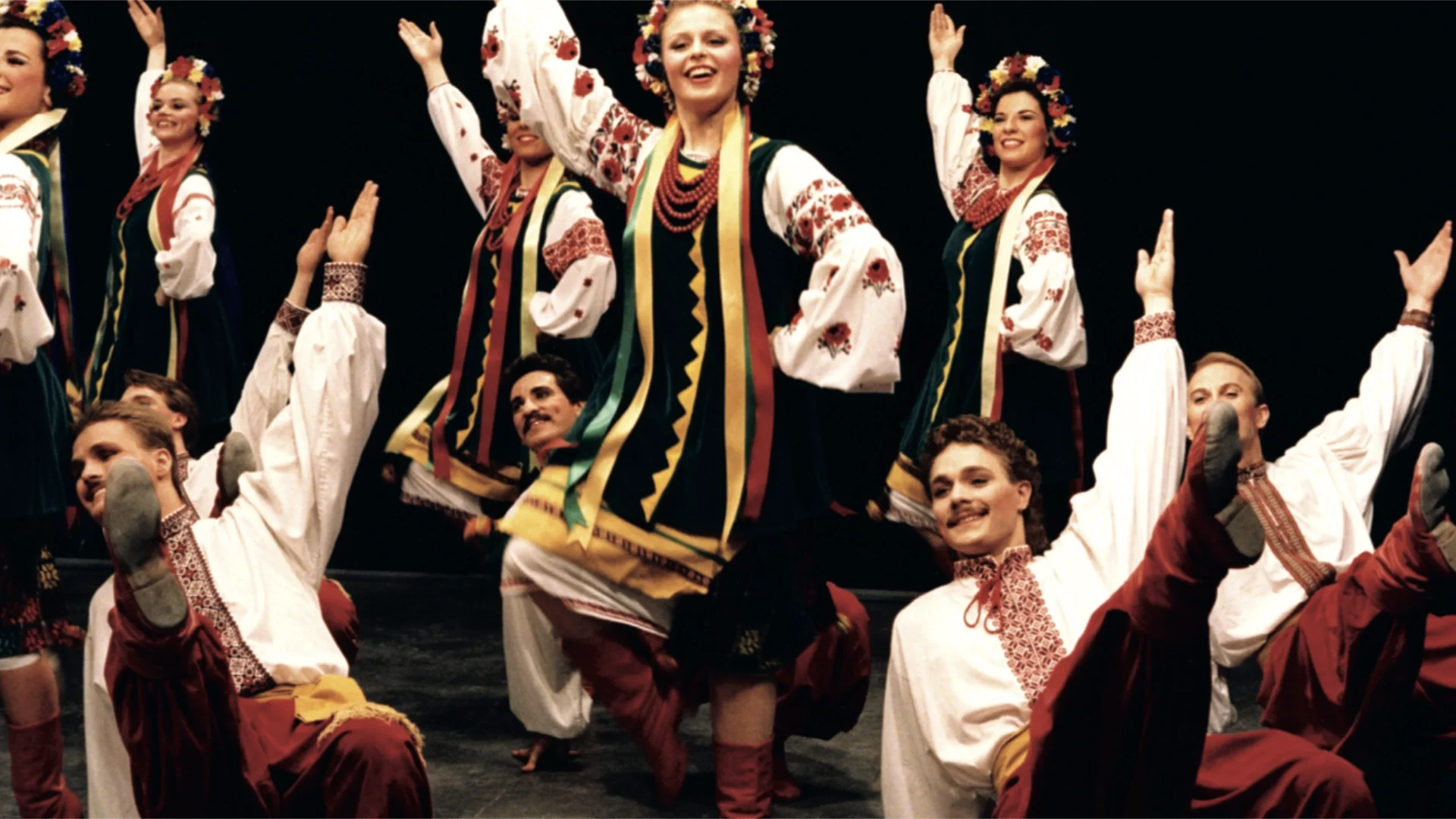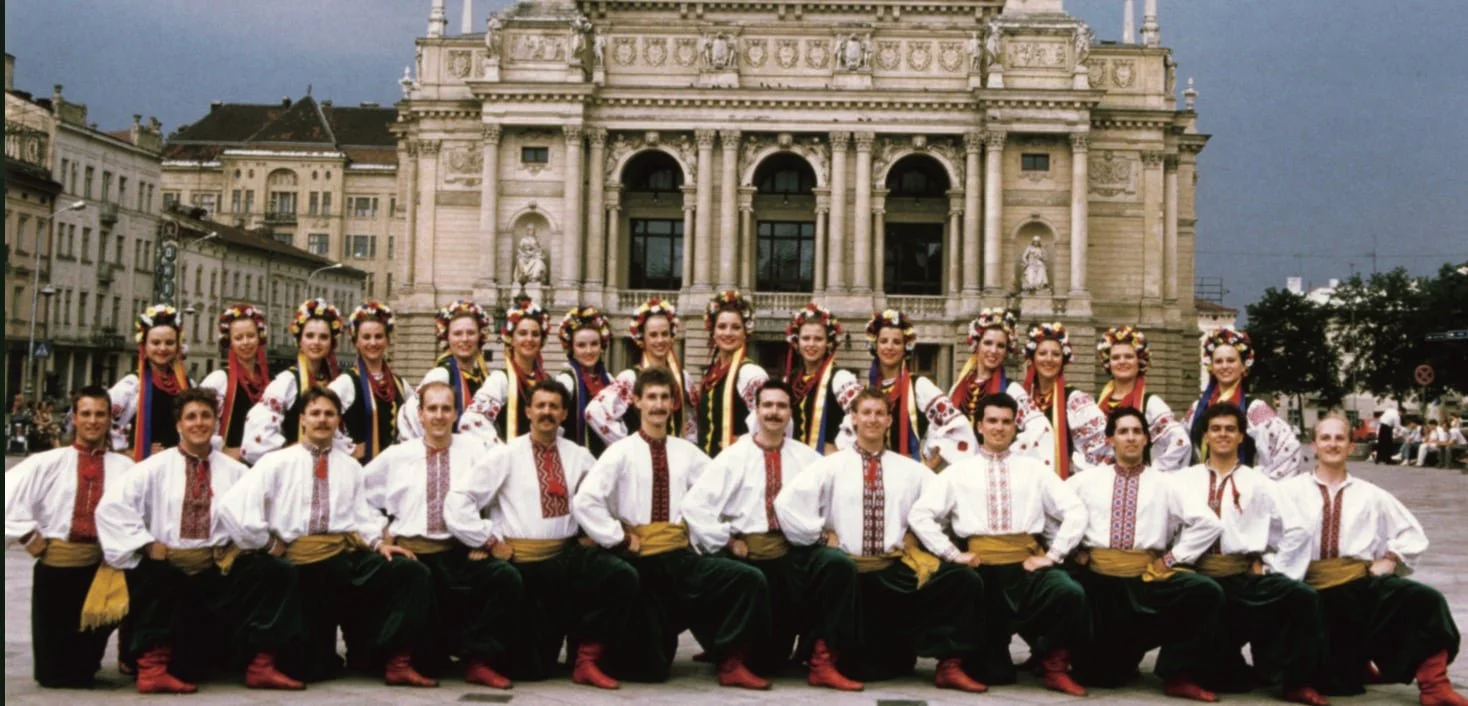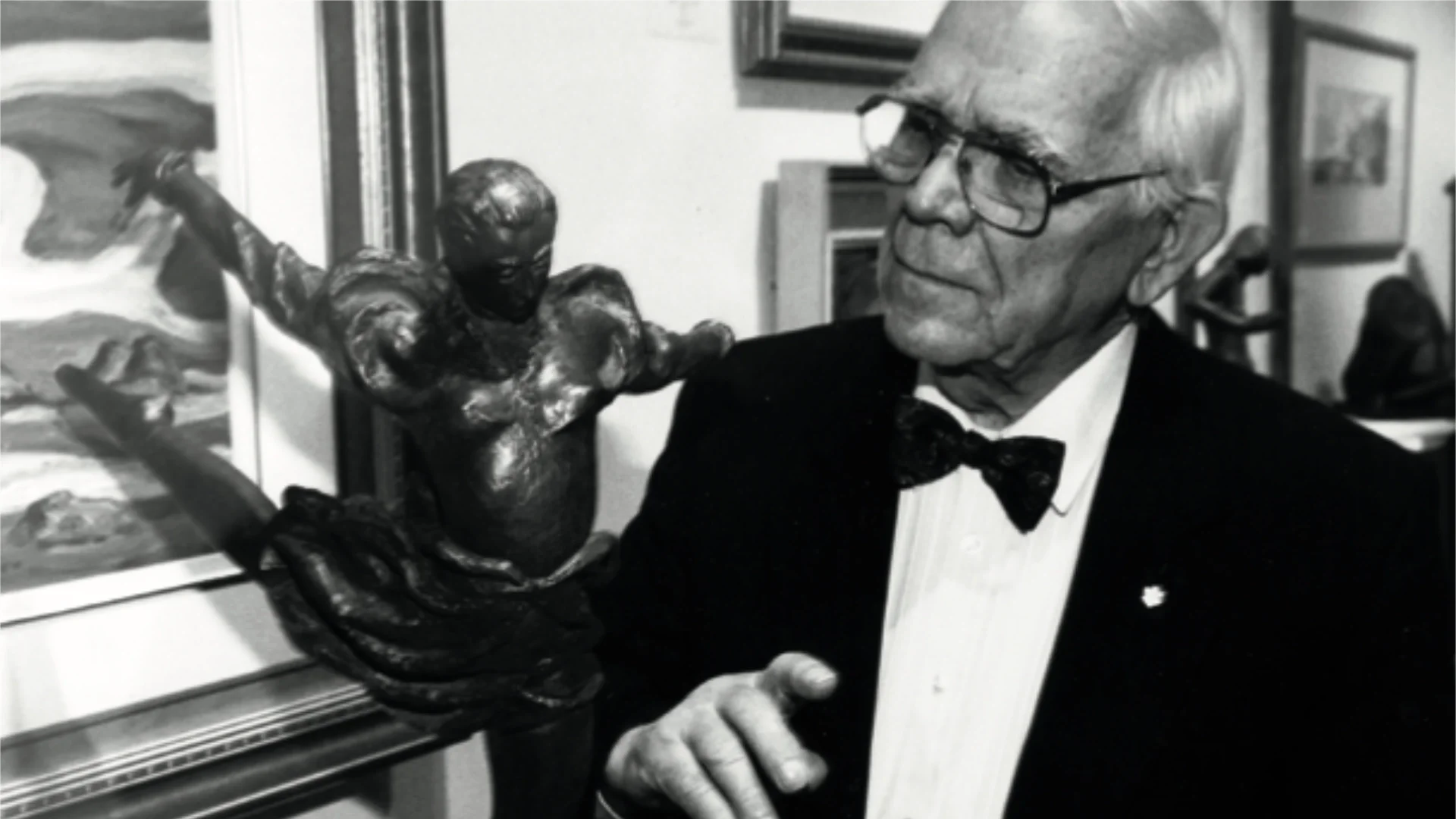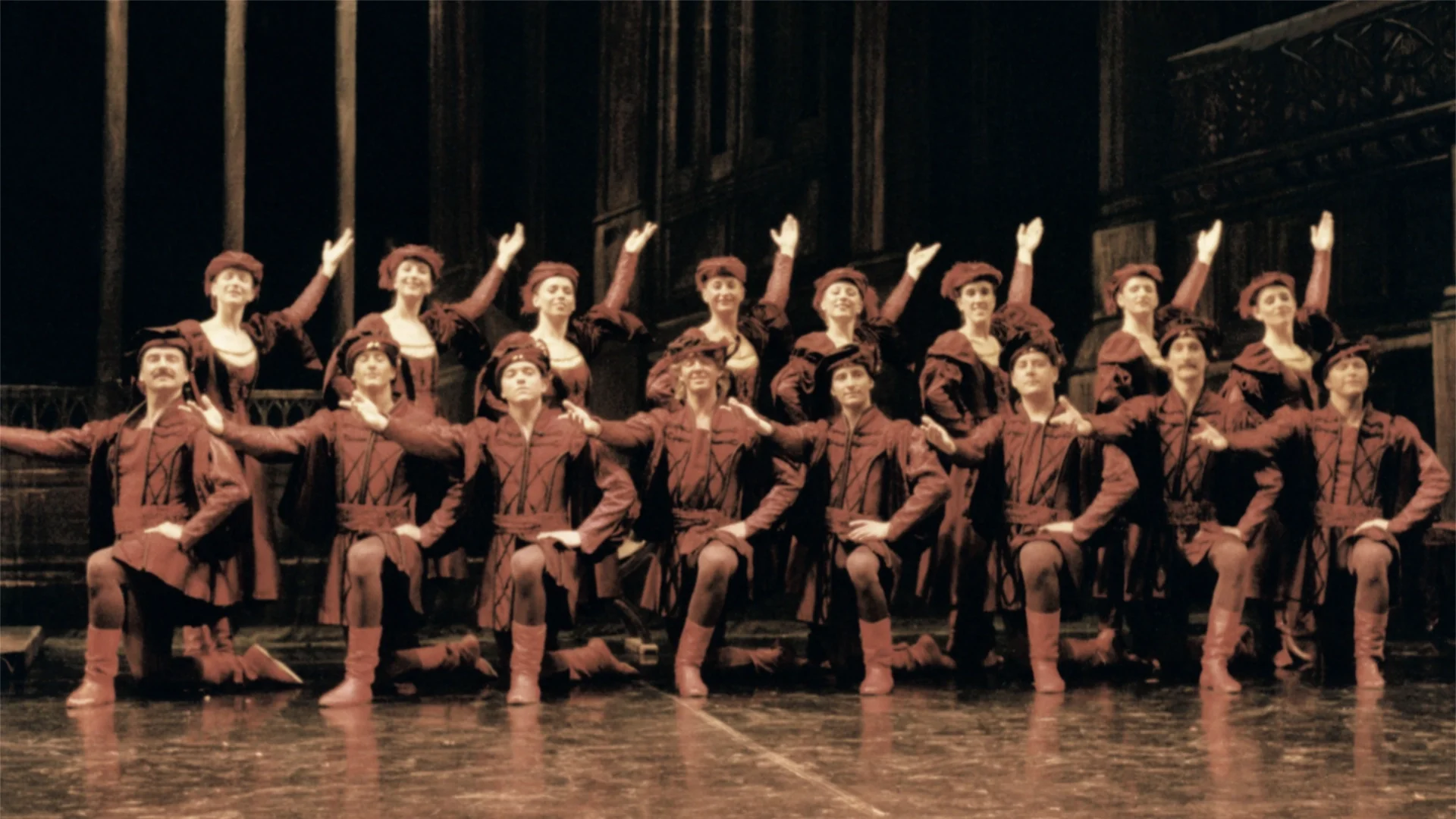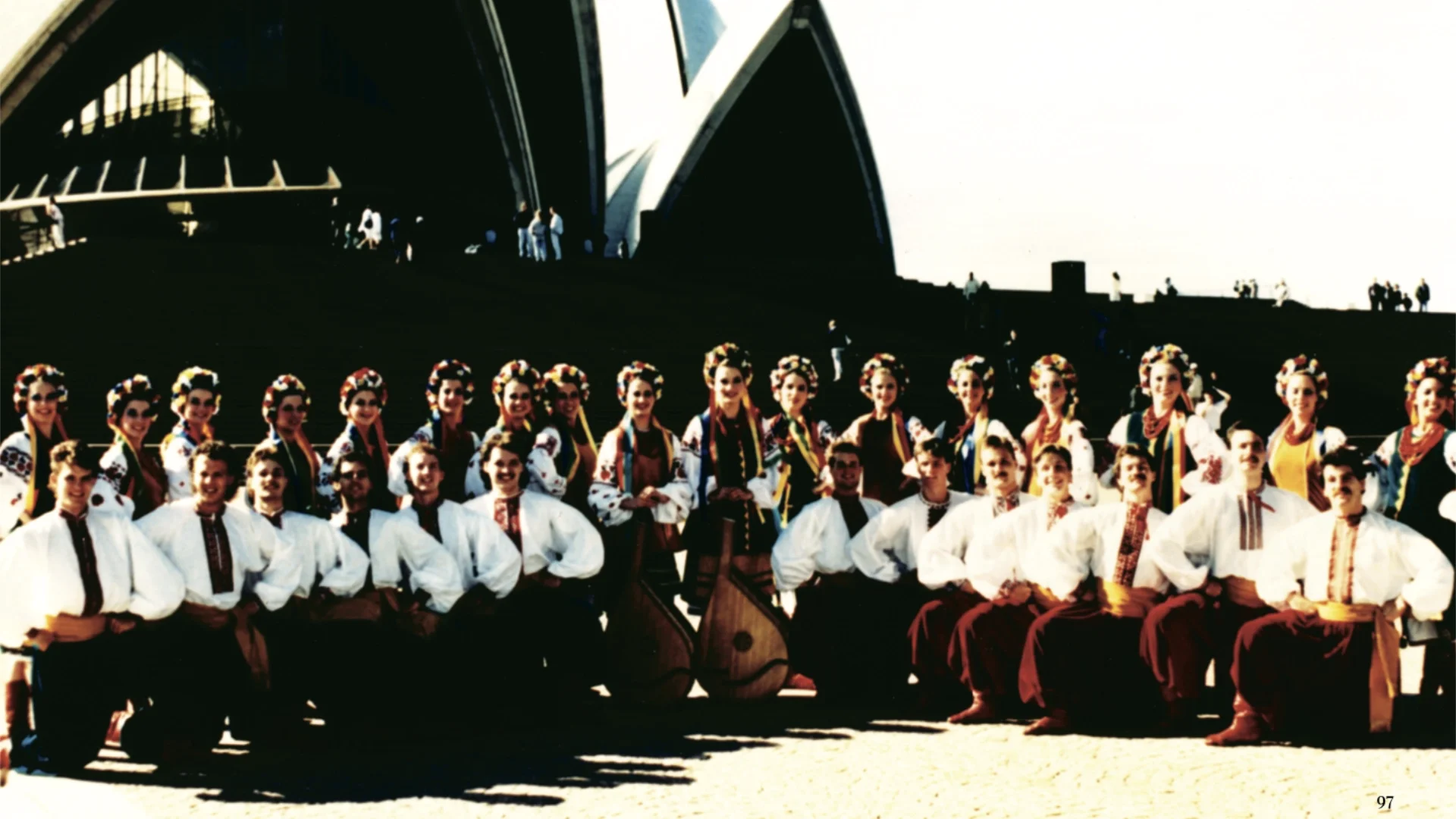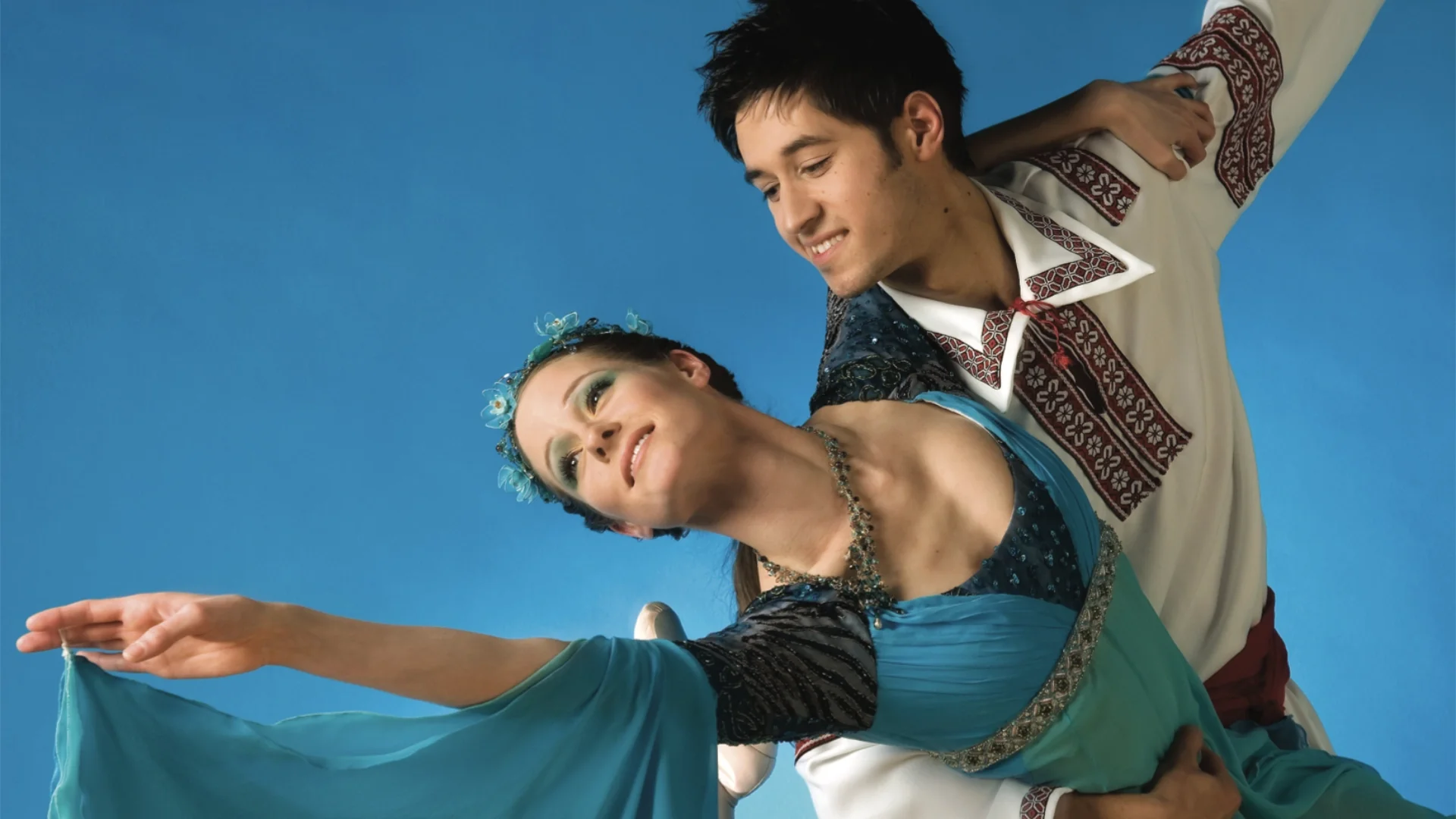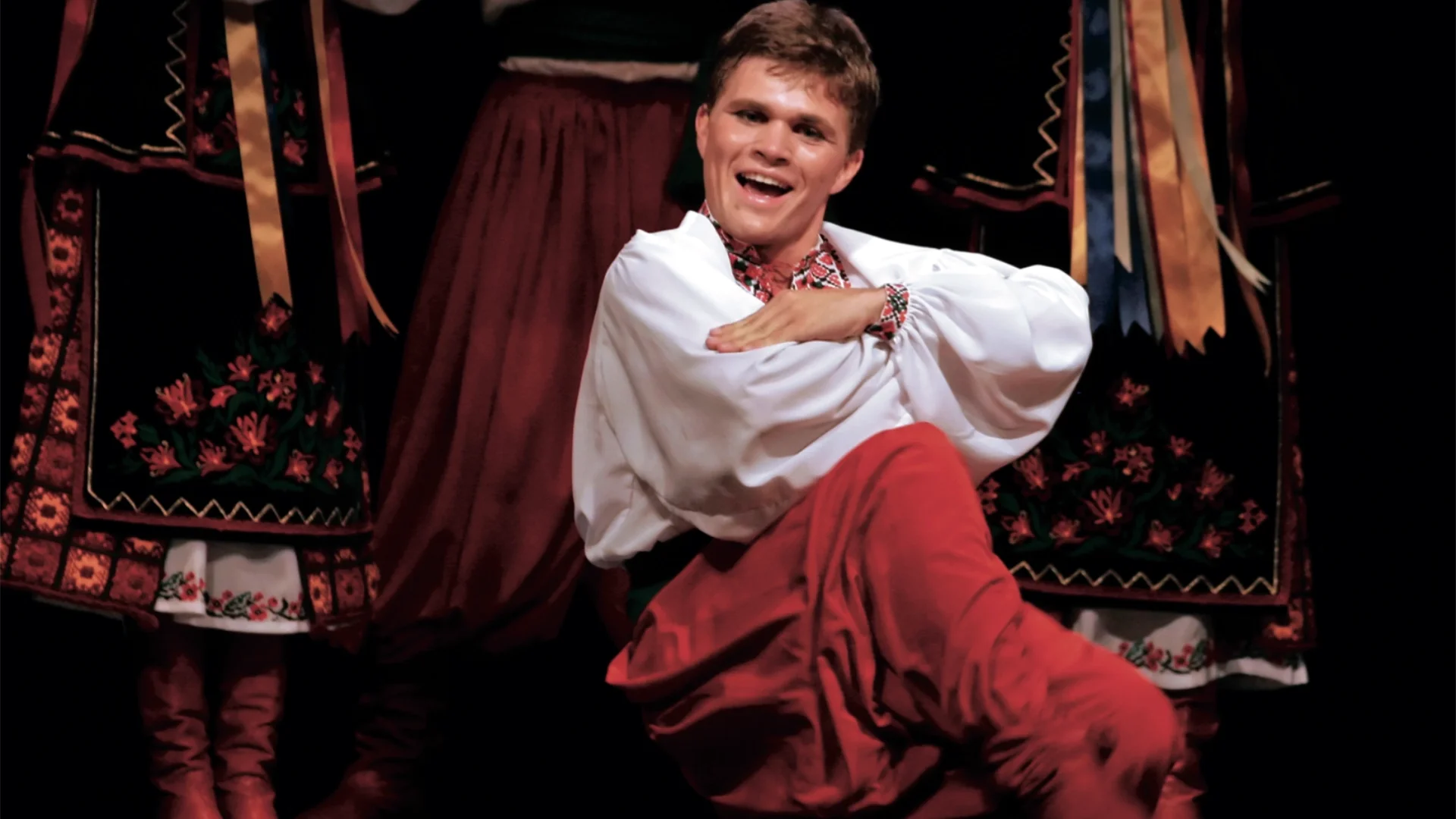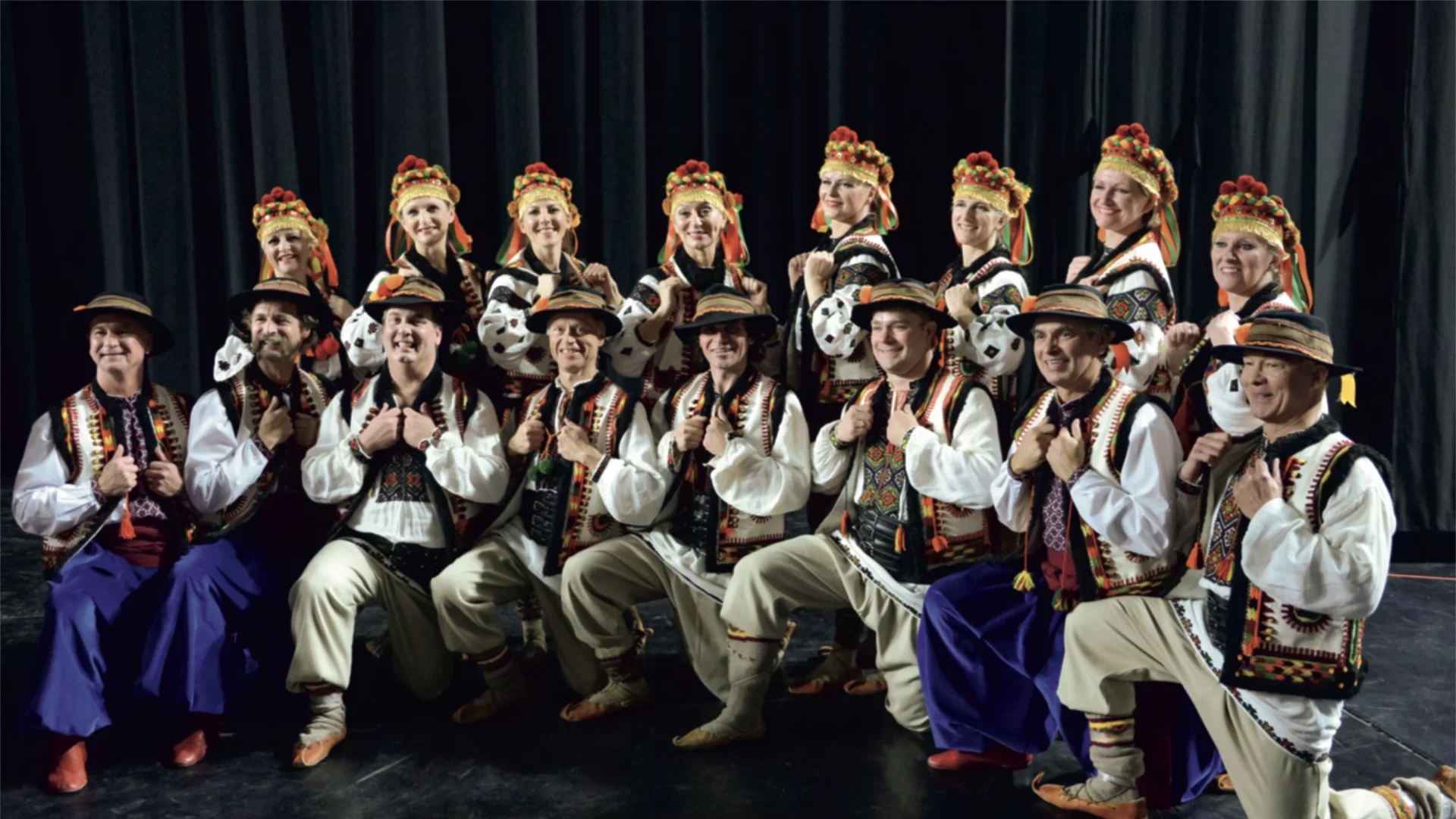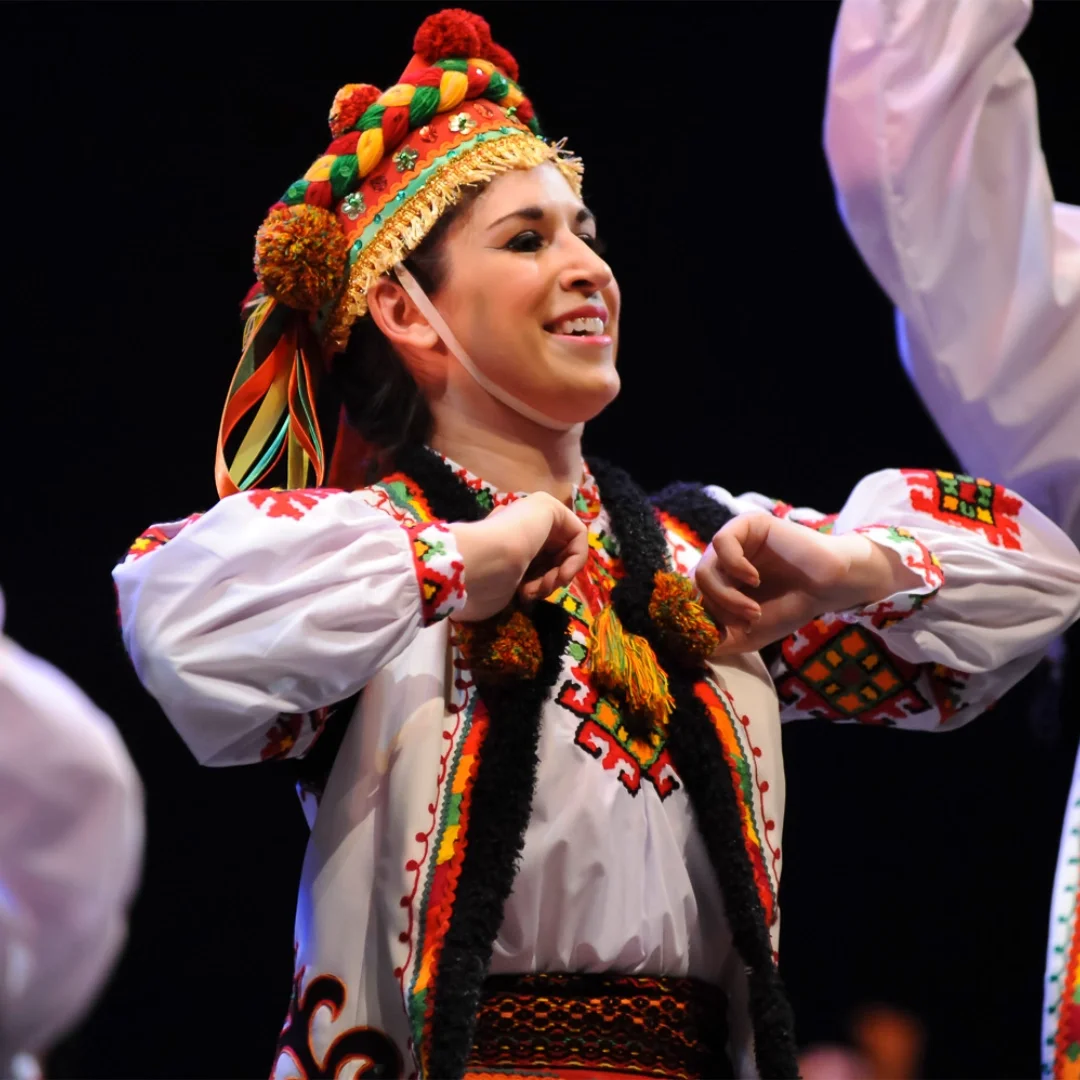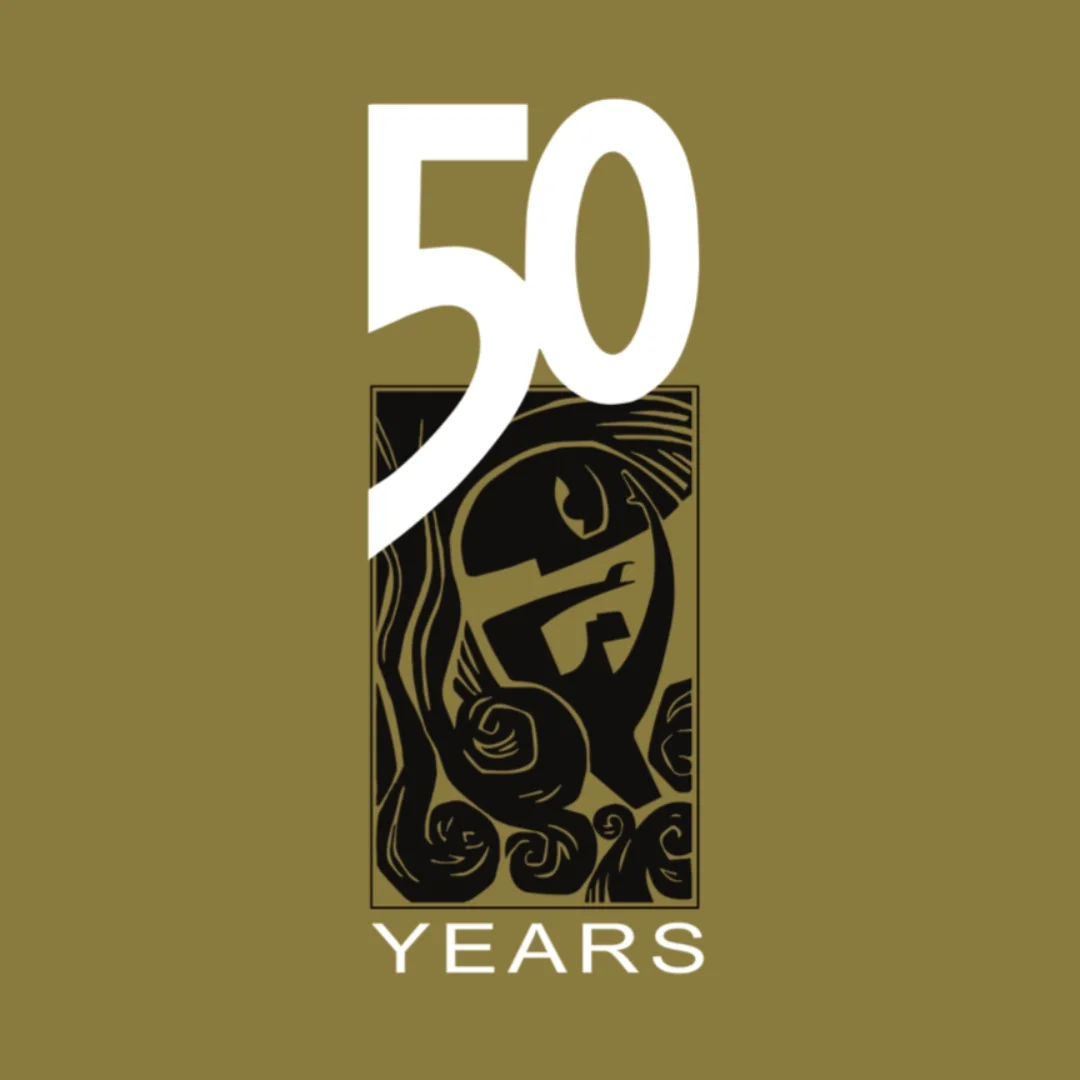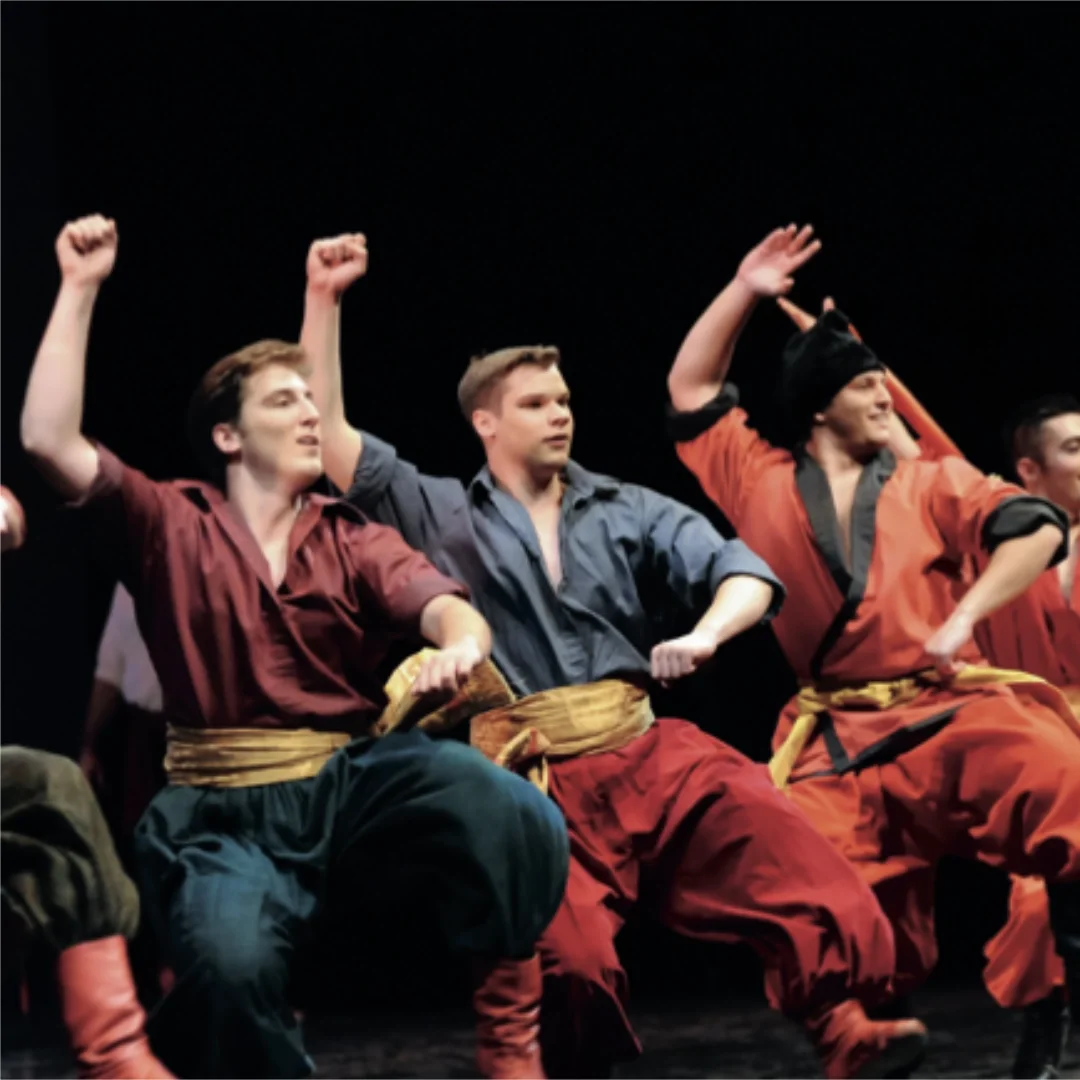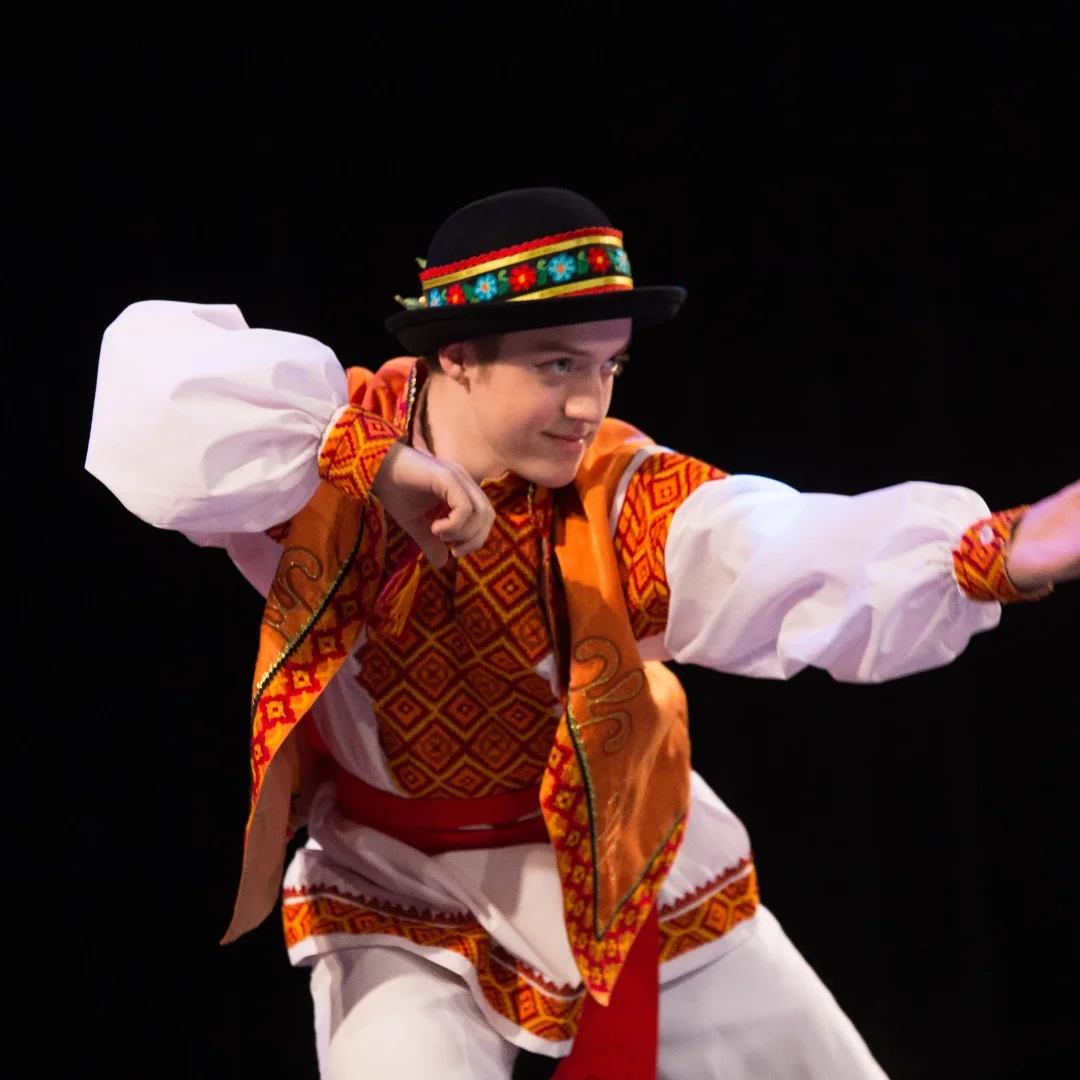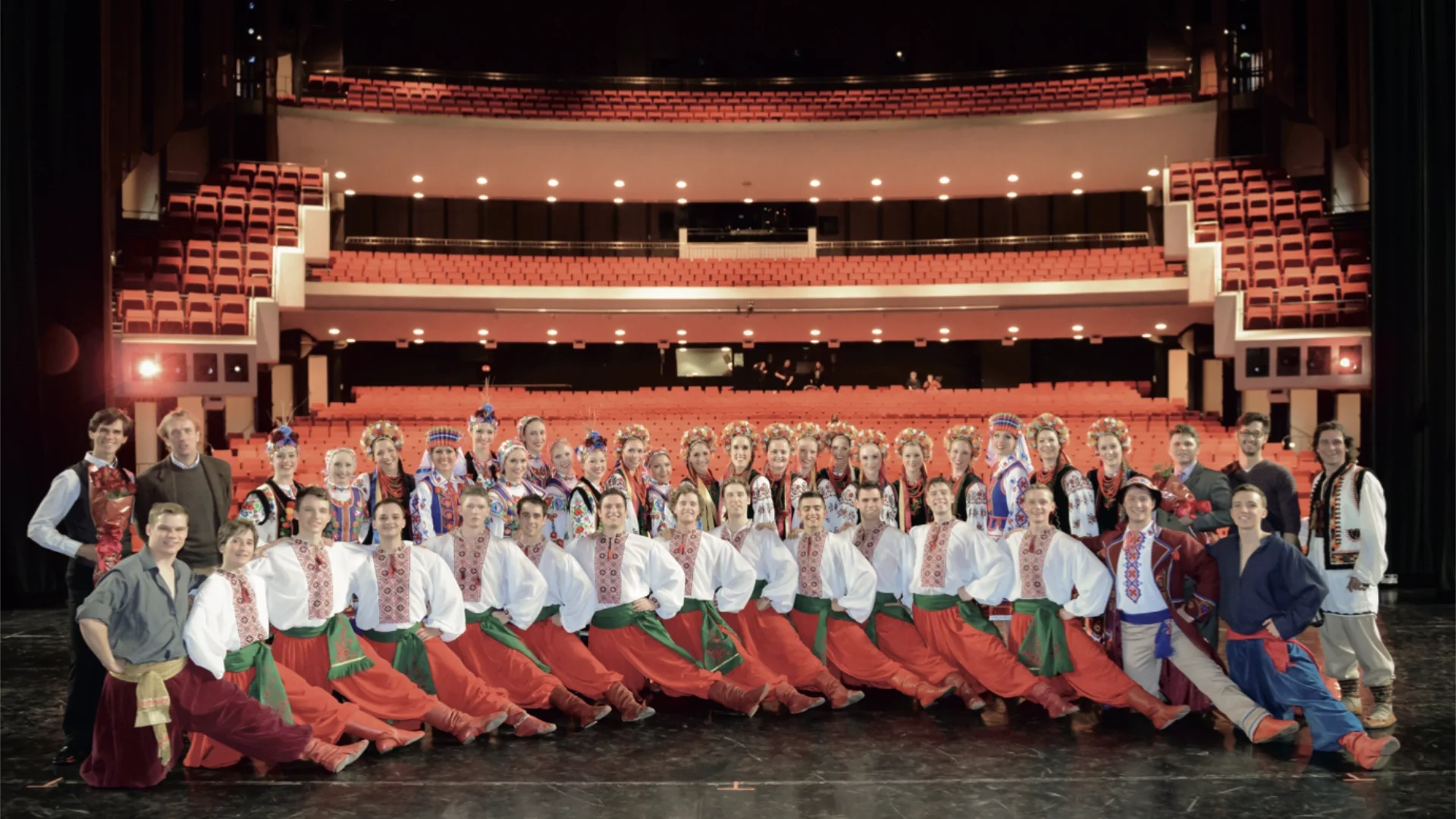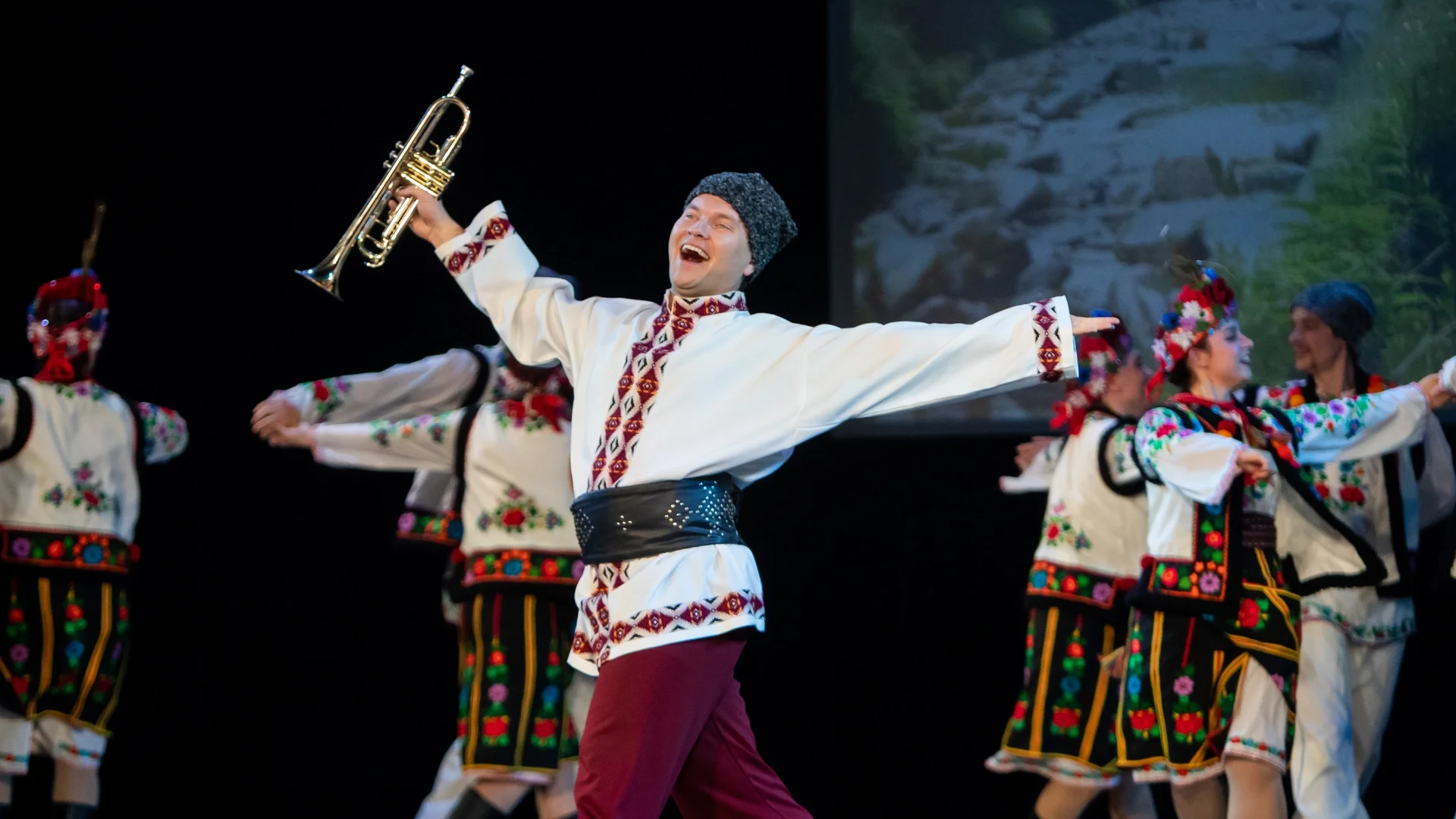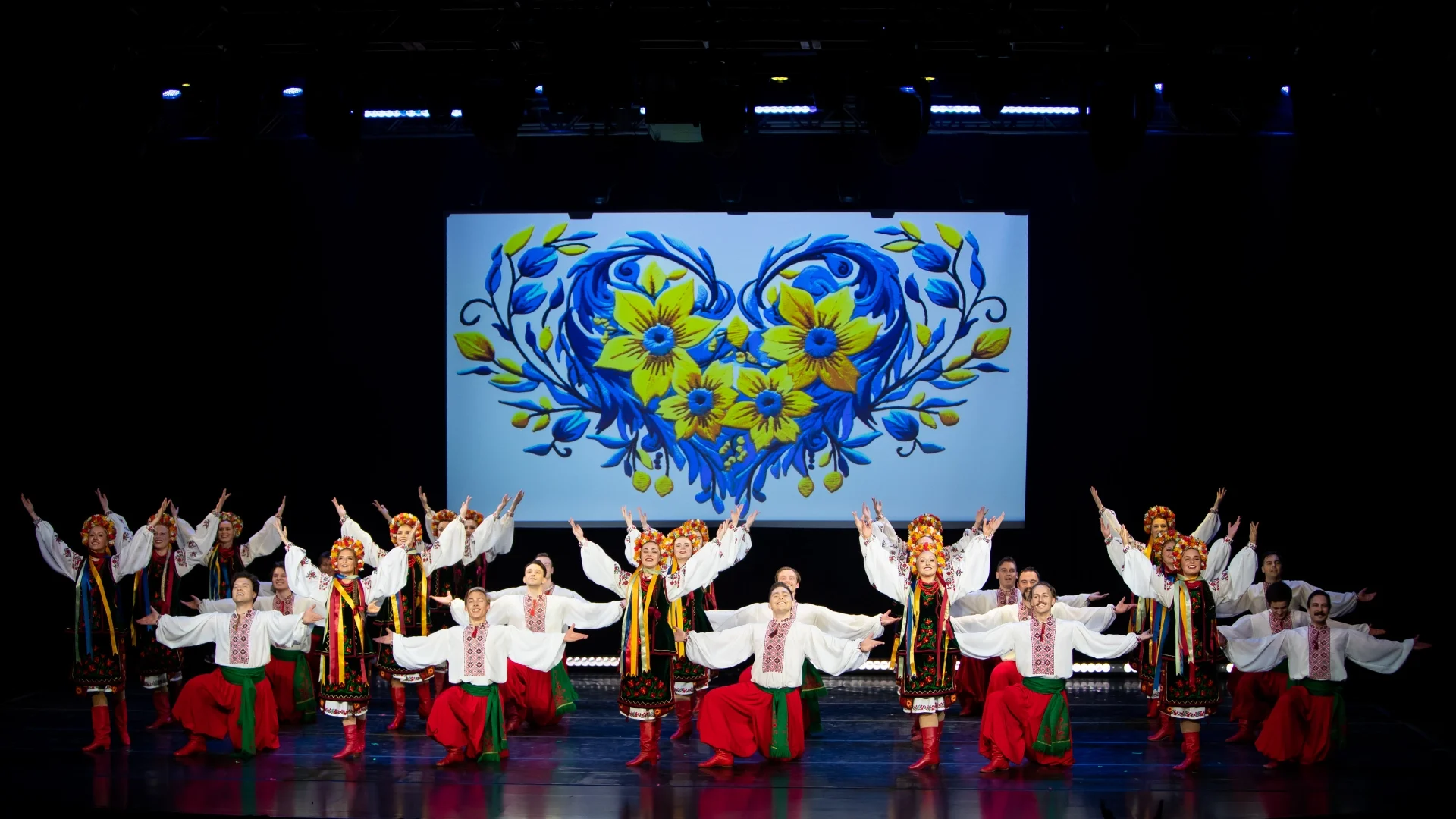The History of Rusalka. A Legacy in Ukrainian Dance
Logo - 2001
Ron Sawchuk | Designer
Since 1962, Rusalka Ukrainian Dance Ensemble has enchanted audiences with its explosive energy, exquisite artistry, and deep cultural roots.
Each decade has brought bold milestones, unforgettable moments, and new generations of dancers who have carried the Rusalka spirit into the spotlight, in Winnipeg, Canada and on stages around the world - placing Rusalka as one of the most widely recognized Ukrainian dance groups in the world.
World-renowned choreographers have all left their mark on Rusalka and its extensive collection of dances.
Anna and Vasyl Kanevets
Valery Debelly (Kyiv)
Roma Pryma-Bochachevsky
Roman Strockij (New York)
Markian Komichak (Pittsburgh)
Olha Dvorovenko and Petro Nebrosky (Veryovka Dance Ensemble)
Discipline. Devotion. Camaraderie.
Rusalka’s rich choreographic repertoire features dances from Ukraine's diverse regions, styles and moods to captivate any audience
1960s
The spark of a movement
Rusalka was born in 1962 under the leadership of Peter Hladun and Joanne Sinkevich, bringing together dancers from the UNYF School in Winnipeg.
Early performances focused on communities across Manitoba, laying the foundation for a growing repertoire of Ukrainian regional dances and costumes.
By 1967, Rusalka performed in Ottawa during Canada’s centennial celebrations and made its debut at Canada’s National Ukrainian Festival in Dauphin in 1969, where it remains a fixture to this day.
“
We were only 12 or 13. You just felt something big was going to happen
1970s
From Manitoba to the world stage
The 1970s marked a bold new era for Rusalka — a decade where the ensemble transformed from a local treasure into a global cultural ambassador. Their 10th anniversary in 1972 set the tone for what was to come: international tours, high-profile performances, and groundbreaking collaborations that elevated Rusalka to national recognition.
The ensemble dazzled audiences from coast to coast, performing at St. John’s Folkfest in Newfoundland, Expo 1974 in Spokane, and Canada’s National Ukrainian Festival — but it was their international appearances that truly turned heads. Rusalka represented Canada in Mexico (1972), Scotland and England (1973, 1979), and Ukraine (1979) — proudly carrying Ukrainian dance to some of the world’s most prestigious stages.
One of the decade’s crown jewels was Rusalka’s 1976 performance at the Montreal Olympics, followed by a CBC-broadcast collaboration with the Winnipeg Symphony Orchestra at the Centennial Concert Hall. In 1977, Rusalka became the first amateur dance group to share the stage with the Royal Winnipeg Ballet, cementing their reputation for professionalism and artistry.
Rusalka’s growing influence reached beyond artistic circles. In 1976, the Canadian government selected the ensemble as an official cultural gift to Chicago’s Bicentennial celebrations, a gesture that reflected Rusalka’s rising diplomatic and cultural significance.
“
An incredible feeling throughout my whole body
— On dancing with the WSO
1980s
Elevating tradition. Expanding horizons.
The 1980s marked a decade of artistic maturity and international acclaim for Rusalka. With a refined style and an ever-expanding repertoire, the ensemble solidified its place as a premier Ukrainian-Canadian cultural ambassador — blending athleticism, grace, and authenticity in every performance.
Rusalka’s touring schedule reflected its rising prestige. The ensemble graced world stages from Royal Albert Hall in London, where Queen Elizabeth II was in attendance, to Expo 1986 in Vancouver, and across Europe, North America, and Asia. A highlight of the decade was an intimate private audience with Pope John Paul II in 1982 at his summer residence near Rome — a profound honour reflecting Rusalka’s cultural stature.
The group also represented Winnipeg in Setagaya, Japan as part of a sister-city cultural exchange in 1986, introducing Japanese audiences to the vibrancy of Ukrainian folk dance. In Canada, Rusalka performed to sold-out crowds in Toronto, Hamilton, and its home city of Winnipeg.
Creatively, the 1980s were equally groundbreaking. New works like “Hutsul Rhapsody” by Roma Pryma-Bohachevsky and “The Weeping Willow (Verba)” by Nikola Dzhugovin enriched the ensemble’s artistic range. These dances, deeply rooted in regional tradition, showcased the group’s technical excellence and storytelling power.
Off stage, a strong alumni and volunteer network blossomed. Many dancers formed lifelong bonds, and for some, Rusalka became a family legacy — with children of alumni stepping into the red boots their parents once wore. It was a decade of pride, discipline, and community — one that pushed the boundaries of Ukrainian dance while remaining deeply rooted in tradition.
“
Once you’re part of Rusalka — you’re always Rusalka.— Oleh Romaniw
1990s
Transforming tradition into art
The 1990s were a transformative decade for Rusalka — one defined by bold artistic growth, global touring, and an unwavering commitment to elevating Ukrainian culture through dance. It was a time when the ensemble fused powerful athleticism with emotive storytelling, captivating audiences across continents.
The decade began with a landmark tour to Australia, followed by multiple visits to Ukraine, including a deeply meaningful appearance shortly after the country’s independence in 1992. Rusalka also brought Ukrainian dance to new audiences at EPCOT Center in Florida, proudly representing both Canada and the Ukrainian diaspora on the international stage.
At home, the ensemble marked its 30th and 35th anniversaries with the visionary Past, Present & Future concert series — productions that set a new artistic standard and celebrated Rusalka’s evolving legacy. The ensemble’s cultural impact was further commemorated through the dedication of a bronze sculpture by renowned artist Leo Mol, honouring Rusalka’s role in preserving Ukrainian heritage.
Artistically, the 1990s saw the addition of now-iconic works like “Kalyna” by Valery Debeley. Rusalka also deepened its integration of balletic technique, training with instructors from the Royal Winnipeg Ballet, which allowed for enhanced precision and grace across its repertoire. In 1999, the group even performed in the RWB’s production of Swan Lake — a rare collaboration that demonstrated Rusalka’s growing versatility and technical range.
Through it all, dedicated artistic directors and choreographers continued to shape Rusalka’s identity. With each performance, the ensemble reaffirmed its role as a dynamic cultural ambassador — rooted in tradition, but always reaching forward.
“
We were proud to represent both Canada and Ukraine on the same stage
2000s
Myth, Movement & Momentum
The 2000s were a decade of creative reinvention and cultural elevation for Rusalka — one that blended deep-rooted tradition with bold, multidisciplinary storytelling. As the ensemble stepped into its 40th year, it did so with renewed vision, international acclaim, and landmark artistic collaborations.
A defining moment came in 2006 with the debut of The Legend of the Rusalka — Rusalka’s most ambitious production to date. Created in partnership with the Winnipeg Symphony Orchestra, the full-length suite wove together classical and ethnic music, vocal performance, and Ukrainian folk dance to bring the myth of the water nymph to life. Choreographed by Anna and Vasyl Kanevets, and featuring music by Volodymyr Gronsky, the production was hailed as a uniquely Canadian triumph and a cultural milestone for Winnipeg's arts community.
The ensemble also expanded its global reach. In 2006, Rusalka headlined the Aberdeen International Youth Festival in Scotland, with dancers featured on banners, newspapers, and postcards throughout the city. In 2007, the ensemble performed The Legend of the Rusalka at the XIV International Festival of Folk Dance in Trujillo, Peru, earning the award for Best Performance and donating their prize proceeds to support local earthquake relief.
Back home, Rusalka marked major anniversaries in 2002 (40 years) and laid the groundwork for its 50th by honoring alumni and spotlighting its next generation. Highlights included a performance at the Bloor Street Festival in Toronto (2004) and return tours to Ukraine (2001) and Scotland.
The decade also gave rise to RAZOM — a collaborative touring project that united Rusalka with top ensembles across Canada. In 2009, 90 dancers from Cheremosh (Edmonton) and Tryzub (Calgary) joined Rusalka on stage in a powerful display of national Ukrainian dance unity. The momentum continued in 2014 with Razom 2, which welcomed Tavria (Regina) and Yevshan (Saskatoon) into the fold.
Artistically, Rusalka entered the new millennium with clarity of purpose and a passion for innovation. The choreography, production design, and cultural storytelling of this decade cemented the ensemble’s status as a premier dance company — proudly Ukrainian, proudly Canadian, and boldly visionary.
“
A uniquely Canadian production — blending mythology, music, and movement
2010s
Honouring the past, inspiring the future
The 2010s were a decade of celebration, reflection, and generational pride. As Rusalka reached its 50th anniversary, the ensemble embraced its legacy with powerful performances, international acclaim, and a renewed commitment to passing tradition forward.
In 2013, Rusalka marked its golden anniversary with a historic tour to Ukraine, reconnecting with the land that inspired its founding. That same year, the ensemble returned to the Centennial Concert Hall in Winnipeg for a sold-out 50th Anniversary Gala, bringing together alumni, founders, Junior Rusalka, and guest artists including the Hoosli Ukrainian Male Chorus and O. Koshetz Choir. Generations of dancers — parents, children, and even grandchildren — shared the stage, embodying Rusalka’s powerful legacy of family and community.
The anniversary wasn't just a celebration — it was a reaffirmation of the ensemble’s mission. The spirit that ignited Rusalka in 1962 continued to guide it forward, inspiring dancers to uphold Ukrainian traditions with excellence and passion.
Internationally, Rusalka continued to shine. The group returned to Trujillo, Peru, where they once again earned Best Performance at the Festival Mundial del Folklore in 2016. They also took the stage in New York City (2014) and across Canada, delivering performances that blended technical precision with heartfelt cultural storytelling.
This decade also saw the rise of a third generation of Rusalka dancers — children of alumni who carried on the ensemble’s traditions with pride. Junior Rusalka flourished, deepening family ties and ensuring that the ensemble’s legacy would continue to thrive for decades to come.
With every step, spin, and story told through dance, Rusalka in the 2010s reminded the world of the enduring power of heritage — passed down, lived out, and celebrated on stages near and far.
“
Dancing alongside my children — in the same boots I wore 30 years ago.
2020s
Resilience & renewal
The 2020s brought both unprecedented challenges and powerful moments of celebration. As the world faced the COVID-19 pandemic, Rusalka stood resilient — embracing virtual platforms, adapting rehearsals, and maintaining its strong connection with audiences and community through creative engagement and unwavering spirit.
In 2022, Rusalka proudly celebrated its 60th anniversary — a milestone that honored six decades of tradition, artistry, and cultural ambassadorship. The anniversary marked more than a number; it was a tribute to the generations of dancers, choreographers, volunteers, and supporters who helped shape the ensemble’s enduring legacy.
In 2023, Rusalka debuted VODA (Choreographed by Vincent Rees), a dynamic new production inspired by the elemental force of water — symbolizing change, renewal, and the cultural strength that flows across generations. Blending movement, music, and mythology, VODA exemplified Rusalka’s ability to evolve artistically while staying rooted in its Ukrainian heritage.
Throughout this decade, the ensemble has continued to prepare for national and international performances, while deepening its community ties through Junior Rusalka and educational outreach. Whether on a global stage or within their home city of Winnipeg, Rusalka remains a powerful voice in preserving and promoting Ukrainian culture — ever vibrant, ever inspired.
As Rusalka steps boldly into the future, its mission endures: to tell the story of Ukraine through dance — with passion, precision, and pride.


